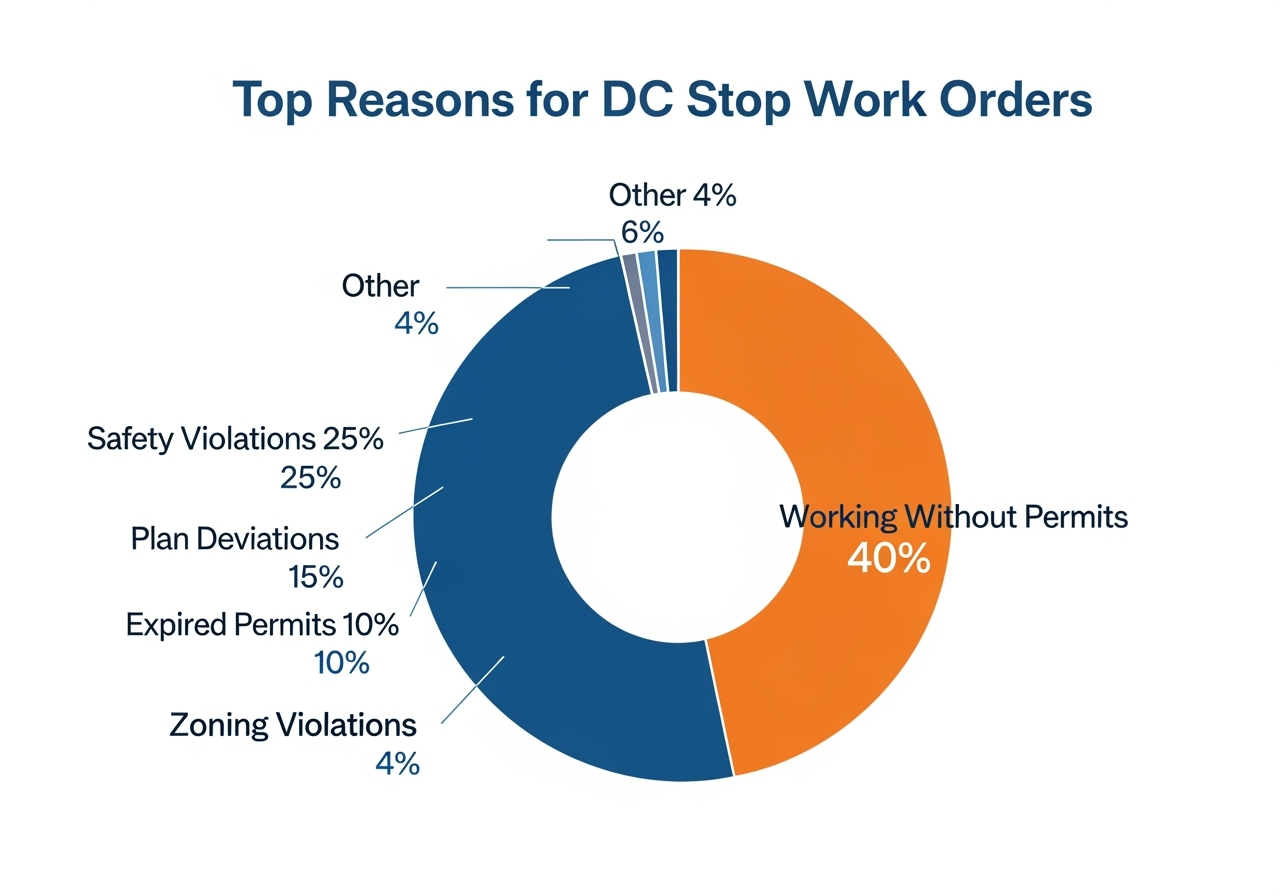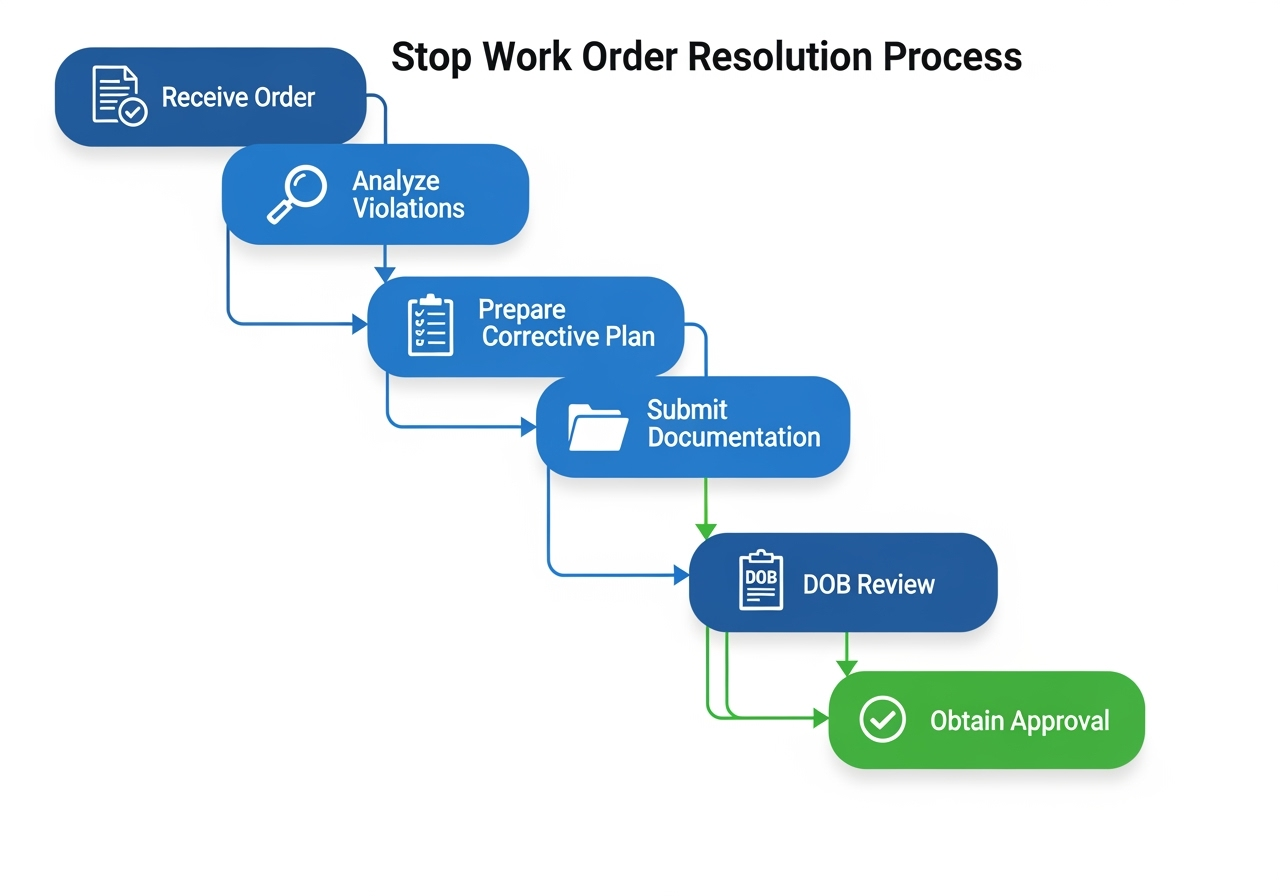Understanding DC Stop Work Orders: Your Complete Guide to Resolution and Compliance
Introduction: The Unexpected Project Halt
Imagine this scenario: You're midway through a promising renovation project in Washington, D.C., when suddenly, a bright red Stop Work Order appears, halting all progress. What seemed like a straightforward project has now become a complex regulatory challenge.
Stop Work Orders (SWOs) are more than just bureaucratic roadblocks—they're critical safety mechanisms that protect public welfare and ensure construction compliance. In this guide, we'll break down everything you need to know about navigating these orders effectively.
What Exactly is a Stop Work Order?
A Stop Work Order is an official directive issued by the District of Columbia's Department of Buildings (DOB) that immediately suspends all construction or renovation activities. These orders are typically triggered by:
Permit violations
Safety code non-compliance
Unauthorized modifications
Incomplete or incorrect documentation
Zoning regulation breaches
Common Triggers for Stop Work Orders in DC
Graph of Top Reasons for SWO
1. Permit-Related Issues
Expired or invalid permits
Working without required permits
Deviation from approved plans
2. Safety Violations
Inadequate structural support
Improper electrical installations
Unsafe scaffolding or site conditions
Failure to meet fire safety standards
3. Zoning and Land Use Violations
Exceeding approved building height
Inappropriate land use
Encroachment on setback requirements
The Financial Impact: What Stop Work Orders Really Cost
Graph of Financial Impact of DC Stop Work Orders
Stop Work Orders aren't just administrative inconveniences—they can be financially devastating:
Daily Delay Costs: $500 - $2,000 per day
Potential Fines: $1,000 - $5,000 per violation
Indirect Costs:
Contract penalties
Labor idle time
Project timeline extensions
Potential reputation damage
Step-by-Step Resolution Strategy
Graph of Step-by-Step Resolution Strategy
Immediate Actions
Do Not Ignore the Order
Cease all work immediately
Carefully review the entire Stop Work Order
Document the exact reasons cited
Engage a permit expediting service
Consult with a local construction attorney
Reach out to the DOB for clarification
Correction and Compliance Process
Address specific violations
Prepare comprehensive documentation
Submit corrective action plan
Schedule re-inspection
Obtain work resumption approval
Prevention: Your Best Defense
Proactive Compliance Checklist
Maintain updated, accurate permits
Conduct regular internal site inspections
Stay informed about current DC building codes
Work with experienced permit consultants
Keep detailed project documentation
Real-World Resolution Example
Case Study: Georgetown Renovation Rescue
Initial Situation: Unexpected Stop Work Order
Challenges: Incomplete electrical documentation
Resolution Time: 72 hours
Total Cost Saved: Approximately $18,000
Expert Tips from 25 Years of DC Permit Experience
Build relationships with local inspectors
Always over-document your project
Anticipate potential compliance issues
Invest in ongoing team training
When to Seek Professional Help
Consider professional permit consultation if:
You've received a Stop Work Order
Your project involves complex renovations
You're unsure about regulatory compliance
Previous permit applications have been rejected
Frequently Asked Questions
Q: How long does a Stop Work Order typically last? A: Resolution can take 3-14 days, depending on violation complexity.
Q: Can I appeal a Stop Work Order? A: Yes, but you must follow strict DOB procedures and provide comprehensive documentation.
Q: What are the most common reasons for Stop Work Orders in DC? A: Permit violations, safety code non-compliance, and unauthorized modifications.
Your Next Steps
Schedule a complimentary 15-minute consultation
Review your current project's compliance status
Conclusion: Turning Challenges into Opportunities
Stop Work Orders, while challenging, are ultimately about ensuring safe, compliant construction. By understanding the process, staying proactive, and seeking expert guidance, you can transform potential setbacks into strategic opportunities for project improvement.
Ready to Protect Your Project? [Contact Us for Emergency Permit Consultation] Call: (202) 729-8272 Email: sayhello@mcgpermits.com




